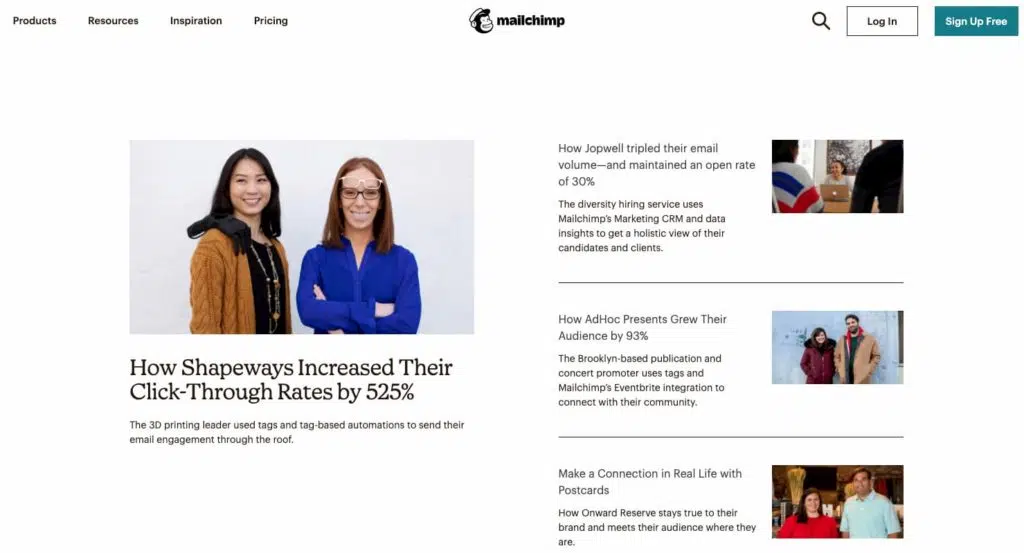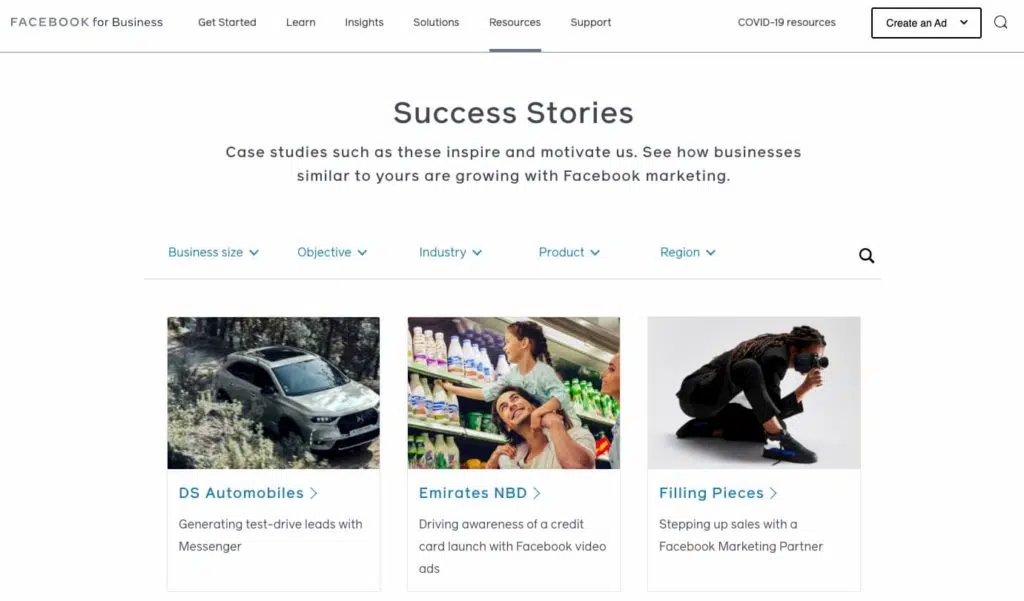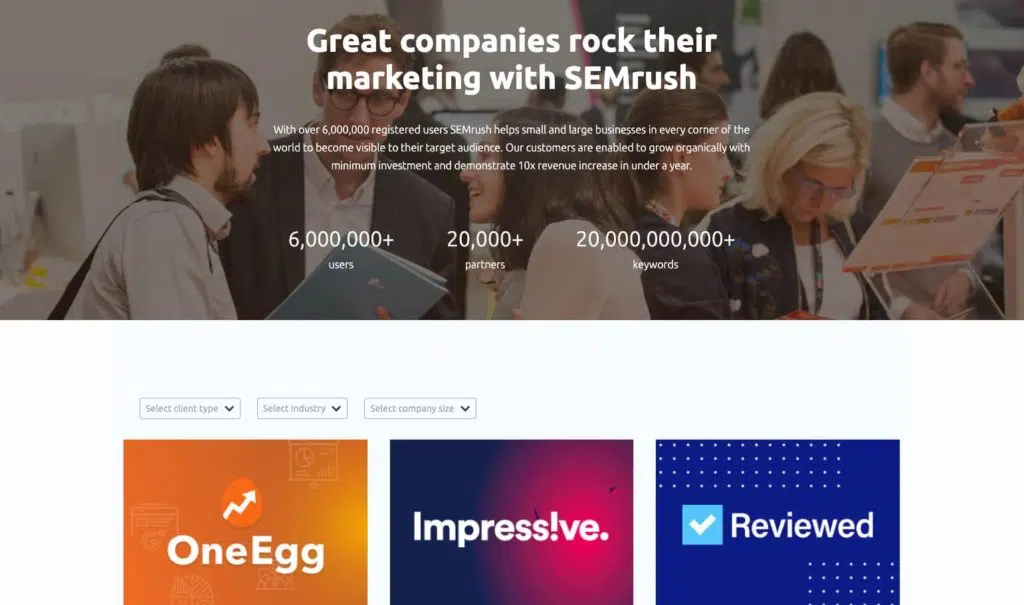A business case study is a piece of content that outlines a customer’s needs, requirements or challenges, and outlines how working with your business solved that particular need. Writing case studies for your business’s website is an ideal way of building trust with potential customers and clients.
Showcasing your previous work demonstrates that you can produce an outcome that satisfies expectations and even exceeds them. This builds upon your website’s copy and illustrates examples of where you have delivered on promises of exceptional products or services. In essence, case studies provide solid proof that prospects should engage with you, and not a competitor.
Why write case studies?
Case studies give specific evidence of your previous successes and the positive relationships you have built within your customer base. They can be written to incorporate statistics and testimonials that further back up your brand’s promises. The overall goal is to tell the story of a particular customer, from their initial approach to the successful outcome. Case studies work for both B2B and B2C businesses, as they allow for the exploration of both individual and business challenges and their resolution.
What to include in a case study
Firstly, it is important to recognise your goals when pulling together a case study. Outline from the outset the outcome your customer was aiming for. Then, examine the types of media you can use to present this to prospects in the most effective way.
Written case studies provide a medium to fully outline the aims, challenges and outcome of a project, but video content offers another method of framing this visually. Interviews with the customer offer a unique perspective on working with your business. By taking the time to outline some questions and allowing the subject to reflect on their answers beforehand, a less scripted approach will come across on film. Infographics also allow a visual representation of the customer’s journey from challenge to solution. Look at your content formatting to present information in the most engaging way for your audience.
Top Tip: Emphasise growth within your business case study. How did your product or service help your customer reach their own goals? Include key performance indicators (KPIs) to support your copy and provide concrete evidence. In a marketing context, these could include factors such as the number of leads generated or the increase in website visitors.
Case studies are not just an opportunity to extol the virtues of your company. It is a common trap to get carried away with praising the work you have done, which is difficult to quantify. An effective case study provides an opportunity to show a portfolio of your work and how it resolved a challenge or met a need. Customers often look for examples that reflect similar requirements to their own in order to assess whether your business is the right fit for them.
Approaching your customers to participate
It is vital that you obtain permission from your customer or client before proceeding with any case studies. Build it in to your project management process, and even introduce the potential of creating a collaborative case study in your initial conversations. It is therefore set up beforehand and expected that there will be open communication about creating a write up of the customer journey. The following factors may incentivise participation:
- Brand Awareness – by gaining exposure through a case study, your own business network will become more aware of the customer’s brand. This is particularly useful for those in the B2B sector who may find it more difficult to cultivate links with other businesses outside their own industry.
- Online Traffic – adding in backlinks to the customer’s own website will send referral traffic their way, while also boosting your domain’s authority.
Closely working with the customer will also ensure that any KPIs provided as evidence of progress or success are up-to-date and accurate. Make sure that the case study is reviewed by the customer prior to publication, whether it is a written piece or visual content. If your business aims to regularly create case studies as content, consider writing up a template for this process, from asking for initial permission through to notifying the customer of publication and provision of the relevant links.
Simple tips for case study success
- Who, what, when, where, and why. These questions may appear basic, but they form the skeleton of your customer’s story. Work through them step by step from start to finish to tell a good story.
- Categorise your case studies to allow your customers to find what they are looking for more easily. Filters could include geographic region, business size, or the specific type of product or service.
- Incorporate quotations if you are putting together a written piece, and enrich it with imagery of both the customer (if appropriate), their place of business, and the solution your business provided.
- Share your case studies through your social media marketing channels, and take snippets of testimonials to share separately by turning them into graphics. Incorporate these into your other marketing strategies by considering what format would appeal to your target audience. Your web personas will help you to identify what appeals to your target audience online, this could be a short video, an in-depth written piece or a podcast.
Examples of effective case studies
Mailchimp offers prospective buyers a series of case studies, directly inviting visitors to their website to ‘Get some real-life inspiration from people like you’. They include their vital KPI in the titles of their case studies to hook the reader in – for example, ‘How AdHoc Presents Grew Their Audience By 93 percent’.

Facebook also addresses their audience directly by leading with ‘See how businesses similar to yours are growing with Facebook marketing.’ As mentioned previously, allowing users to sort and filter by industry, product and region gives the freedom to narrow down choices until they most closely resemble people’s specific requirements.

SEMRush similarly allows filtering, and within their case studies, they use the traditional outline – challenge – solution – measurement model. They incorporate screenshots of their software’s metrics to show visual evidence of their customers’ success and to push their product at the same time.

Take a look at some of our previous case studies on our Portfolio page. If you have any questions about our work, please don’t hesitate to get in touch with one of our friendly team by emailing customerservice@mackmangroup.co.uk.
